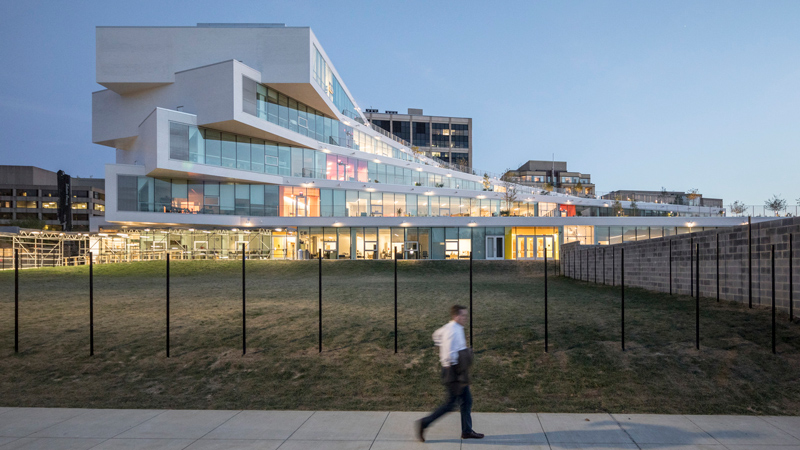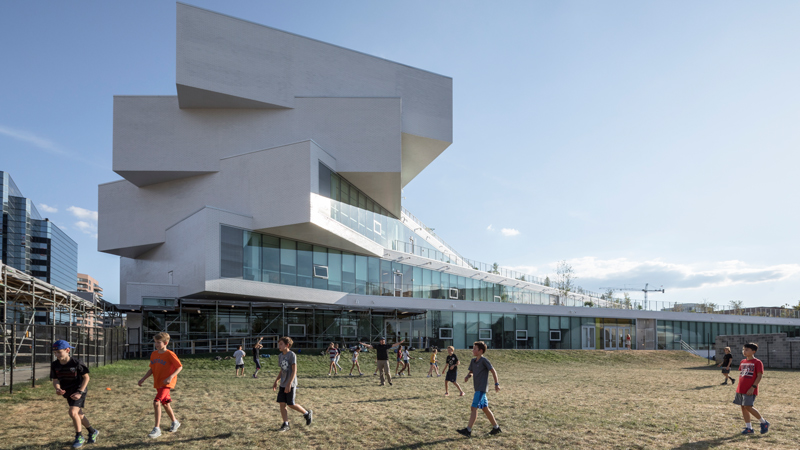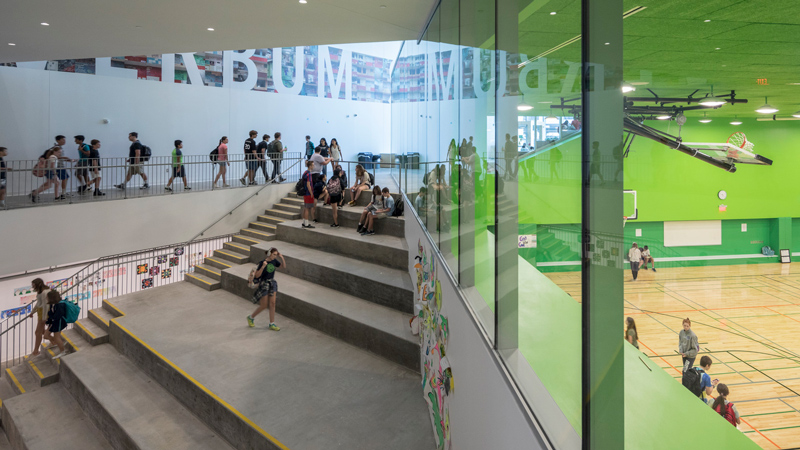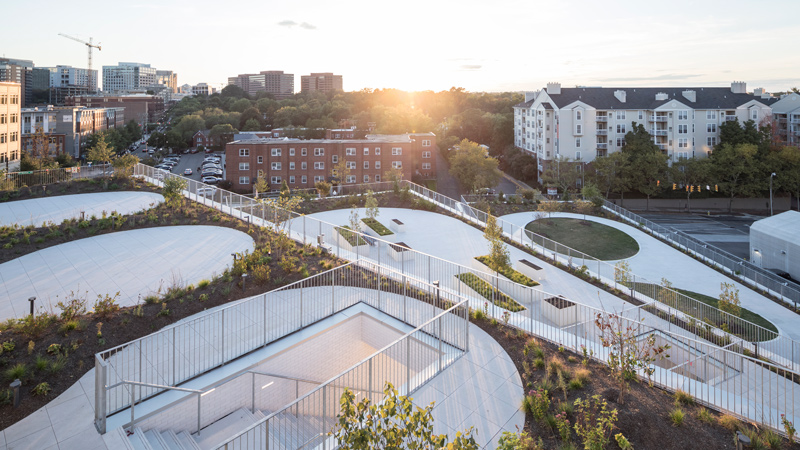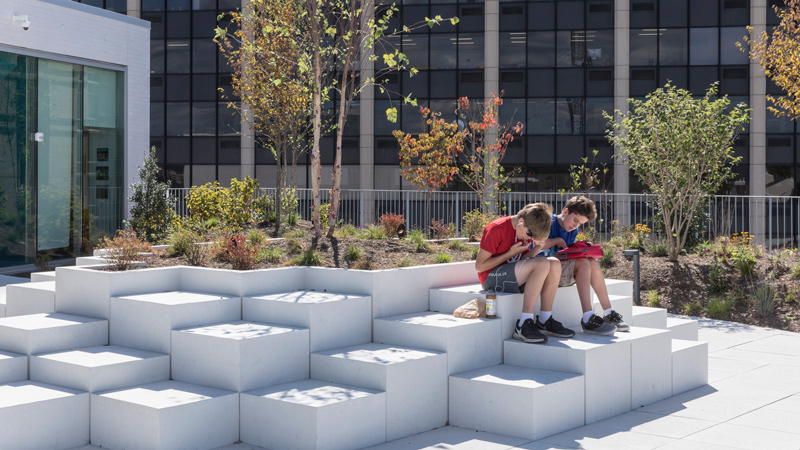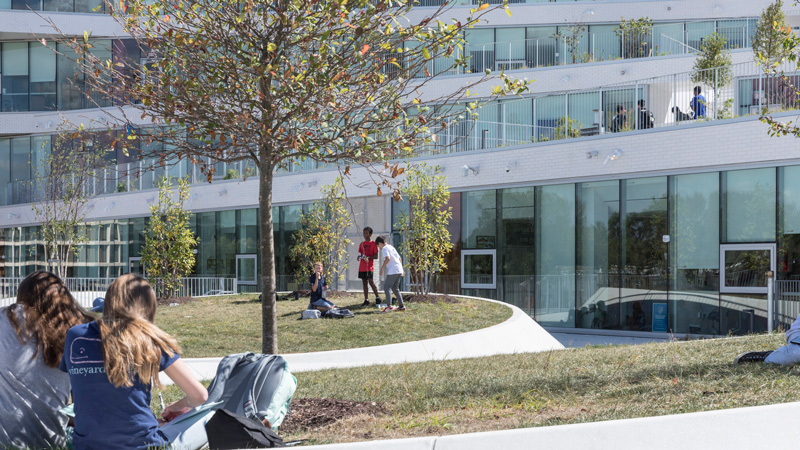Recent Articles
LEO A DALY Earns AIA Nebraska Design Award for Third Consecutive Year
AIA Nebraska recognizes the Omaha VA Ambulatory Care Center with an Architecture Citation Award
Innovative Design Strategies Revolutionize Veterans’ Mental Health Access in New and Renovated Facilities
LEO A DALY commemorates its impactful journey in designing state-of-the-art mental health facilities for veterans from coast-to-coast.
Zach Klebba Picked for Building Design + Construction’s 40 Under 40 Class of 2023
This LEO A DALY architect is one of 40 under 40 selected nationally for his industry contributions, community service and leadership.
Harbin Riverside District Recognized for Excellence in Design
Harbin Riverside District was awarded for excellence in design from the Shanghai Exploration and Design Trade Association.
LEO A DALY Earns Top Interior Design Award from The Hospitality Industry Network (NEWH) Dallas Chapter
LEO A DALY Dallas studio wins interior design award for design excellence and their contributions to the hopsitality industry.
LEO A DALY and BIG complete The Heights Building
The new building for Arlington Public Schools houses two of the most progressive public education programs in the United States
LEO A DALY, in partnership with BIG – Bjarke Ingels Group and Arlington Public Schools (APS), is pleased to announce the completion of The Heights, a new secondary school building in Arlington, Virginia. The architecturally stunning new facility co-locates two APS programs that are among the most progressive in the United States: a democratic alternative magnet program, and a program for students with severe intellectual disabilities.
LEO A DALY served as executive architect for the project, working closely with design architect BIG. Gilbane provided construction manager at-risk services.
“The Heights creates a new architectural icon in Northern Virginia and one of the most innovative educational facilities ever built,” said Tim Duffy, vice president and director of technical services with LEO A DALY. “Learning and community are infused into every detail, from its twisting geometry to the bespoke learning environments that support students in their educational journey.”
Building up, with a twist
The Heights employs a unique architectural form to maximize density and open space on a tightly constrained site in Rosslyn, Virginia. Five levels of classrooms are rotated around a central pivot point, creating rooftop terraces on each level that serve as outdoor educational environments. A cascading central stair stitches the five levels together, creating a sense of connectivity and community that is rare in midrise school buildings.
A lobby and gathering space, theater and gymnasium are located on the ground floor, occupying spaces of varying heights created by the rotation of the classroom bars. Public areas are accessible from the main street along Wilson Boulevard.
The design is a thoughtful response to the rapid densification currently underway in the Rosslyn business district. As part of the West Rosslyn Area Plan (WRAP), the Heights contributes to an urban mixed-use corridor defined by civic-minded public spaces and a blend of retail, office and residential uses. LEO A DALY and BIG worked closely with APS, WRAP and the Arlington community over the course of 12 public meetings to create a design that serves a wide variety of stakeholders.
DIY pedagogy: H-B Woodlawn
The Heights supports the learning needs of two unique APS programs housed there: H-B Woodlawn and the Stratford Program.
Based on the liberal education movements on the 1960s and 1970s, H-B Woodlawn empowers students from grades 6 through 12 to direct their own courses of study and engage directly in administrative matters. To accommodate independence and freedom of expression, H-B Woodlawn spaces are designed more like a university campus than a typical high school.
A large, open lobby offers tiered seating for students to gather between and after classes, engage in self-guided learning and investigate their interests alone or in groups. Classrooms use flexible layouts that can be rearranged for different learning formats according to the class or lesson type. State-of-the-art smart panel screens allow students to share content from their own school-issued devices for more interactive learning. Specialized spaces include a library, art studio, a kiln, science and robotics labs, music rehearsal rooms and two performing arts theaters.
Four rooftop terraces are accessible directly from classrooms on levels two through five. Each terrace provides a different scale of activity, from large gatherings to class discussions and quiet study areas. The four terraces are designed to reflect the major ecosystems of the Mid-Atlantic physiographic regions and are landscaped with native plants and tree species through an intensive green roof system.
Learning independence: the Eunice Shriver Kennedy Program
The Eunice Shriver Kennedy Program, which serves special-needs students aged 11 to 22, occupies two levels within a dedicated wing of the building. Many Shriver Program students use wheelchairs and have sensory and motor disabilities that require the help of a personal companion during the day. The curriculum is individualized to each student and focuses on vocational and community skills such as daily living, communication, leisure, recreation and other skills that help with independence.
Shriver Program areas provide privacy and ease of accessibility, with both floors directly accessible from grade. Learning spaces on these levels support APS’s Functional Life Skills program, with distinct areas dedicated to different skills. Stratford students have a dedicated gymnasium and secure courtyard, occupational physical therapy suite, and sensory cottage with specialized equipment to help with sensory processing.
Executing a highly technical build
LEO A DALY and BIG worked closely with structural engineering firm Robert Silman Associates to execute the building’s many gravity-defying cantilevers. An ingenious system of trusses transfers building loads at each level while avoiding the need to have columns in classrooms or other large program areas, such as the gym and theater. A careful erection sequence was carried out in phases to build the complicated structure.
The density of the building’s program required a careful approach to acoustical design. Spaces with the greatest potential for noise bleed, such as gyms and theaters, are located on the ground floor. Other spaces, such as music rehearsal rooms, have isolated floor slabs and suspended ceilings to buffer them from surrounding classrooms. The large auditorium uses conditioned air supplied through an underfloor plenum, achieving isolation from the adjacent mechanical room.
This high-performance, sustainable building is expected to achieve LEED Gold certification.

